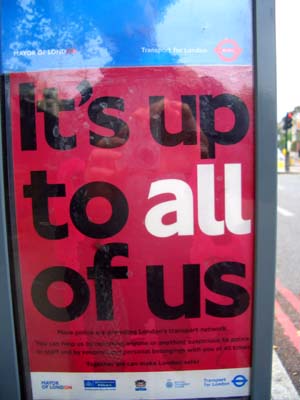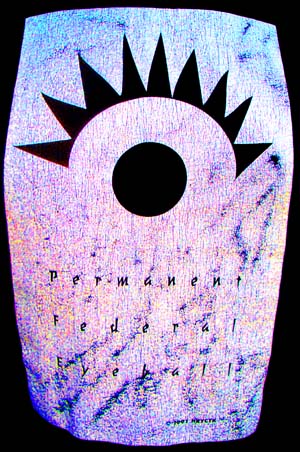
i say my 40 yr old nam-myoho-renge-kyo buddhist chant near every day. i say it for help when worried (what - me worry?), as thanks to the universe for being kind and having such a sense of humor, sometimes for its calming rhythm, its soothing om-like sound, and i say it a lot to calm myself when my endless inner rage raises its ever present myriad head. what i don’t do is say it for others to hear. but here’s where i got it:
In 1966 San Francisco, two cute oriental young ladies ask me if I want to go to a Zen meeting, so I went around the corner, hid all my money in my sock, and went with them.
They took me out to the suburbs into a small living room that’d been turned into a temple. We had chants, and incense, and at the end I signed up to become a Zen Buddhist. They gave me a Gohonzon — a little scroll — and a chant to chant to it (Nam myoho renge kyo – I think it was Nicherin Daishonin Buddhism). They asked for a donation, so I had to take the money out of my sock, which made ’em smile, and they took me back downtown.
I was hoping for romance, but I think it was the ole bait’n’switch, you know.
I lost the Gohonzon but I still say the chant just about every day one way or another for multiple reasons and situations.

the history of where the chant originated, what it means – officially:
Established 28 April 1253. The title of the Lotus Sutra in its Japanese translation is Myoho-renge-kyo. But to Nichiren, Myoho-renge-kyo was far more than the title of a Buddhist text, it was the expression, in words, of the Law of life which all Buddhist teachings in one way or another seek to clarify.
Nam – From Sanskrit, “to devote oneself.” In original Sanskrit, nam indicates the elements of action and attitude, and refers therefore to the correct action one needs to take and the attitude one needs to develop in order to attain Buddhahood in this lifetime.
Myoho – Myoho literally means the Mystic Law, and expresses the relationship between the life inherent in the universe and the many different ways this life expresses itself. Myo refers to the very essence of life, which is “invisible” and beyond intellectual understanding. This essence always expresses itself in a tangible form (ho) that can be apprehended by the senses. Phenomena (ho) are changeable, but pervading all such phenomena is a constant reality known as myo.
Renge – Renge means lotus flower. The lotus blooms and produces seeds at the same time, and thus represents the simultaneity of cause and effect. The circumstances and quality of our individual lives is determined by the particular of causes and effects, both good and bad, that we accumulate (through our thoughts, words and actions) at each moment. This is called our “karma”. We create our destiny and we can change it. The lotus flower grows and blooms in a muddy pond, and yet remains pristine and free from any defilement, symbolizing the emergence of Buddhahood from within the life of an ordinary person.
Kyo – Kyo literally means sutra, the voice or teaching of a Buddha. In this sense, it also means sound, rhythm or vibration. Also, the Chinese character for kyo originally meant the warp of a piece of woven cloth, symbolizing the continuity of life throughout past, present and future. In a broad sense, kyo conveys the concept that all things in the universe are a manifestation of the Mystic Law.
The phrase NAM-MYOHO-RENGE-KYO is taken from the title of the greatest teaching of the first historically recorded Buddha, known as Siddhartha Gautama or Shakyamuni Buddha, who lived in India around 500 years before Christ was born.
There is such a close relationship between each of us and our surroundings that when we change ourselves, we change the world.

added for poet-ick jack by smith unit 1…
Think what your inner rage would be like if you didn’t have your 40 year practice! Wow, I’d hate to have to witness that. We all need some kind of practice to unrage ourselves and the ones that don’t become suicides, serial killers or mass murderers killing themselves over and over. Christianity is not well practiced in many places, but real Christianity contains most of the same elements as Zen and most forms of Buddhism. I think Christ must have been a cover buddhist. I’m not trying to convert anybody, but the Christ-Buddha is at the bottom of my practice of unragement. – Peace and Blessings
to poet-ick jack: your reply added by smith unit 1 – spent the evening with Blue Seven, leader of the Urban-Jellen Test art rock avant garde garage band… he spent 14 months in thailand reading buddhist texts and other etcs… he says they all say the essential same thing – change yourself first, which will help change the world around you
If you want peace you need to be peace
–Gandhi
If you ain’t peace you ain’t gonna get none
–McGuane
(added for poet-ick jack)
As more tenets of the Church of Not So Much Pain & Suffering leak out, we disciples recognize the European venture as described in this blog as the “Exodus” book of the new canon. Message: Go! Be free!
My teacher, Gelek Rimpoche, is fond of saying that J.C and Shakyamuni had each other on speeddial.
i’m brazilian. My family and i are independents. We all do believe that Christ is a cover in many ways. We ask through Nam Myoho… for peace and trust and we believe that Namu Myoho… is too much deeper than a plain title. Blessed be you all.
Luiz B. Neto.:
The Chant Nam Myoho Renge Kyo is not Zen Buddhism, and you didn’t attend a Zen Buddhist meeting. It’s the “great invocation” or “Daimoku” of Nichiren Buddhism, an altogether different teaching than Zen.